Traditional Irish Food – 18 Irish Dishes You Need to Try
It’s pretty safe to say that most people visiting Ireland aren’t there for the food.
People visit the Emerald Isle for all sorts of reasons, such as drinking a proper pint of Guinness while listening to trad music, discovering the wild and rugged landscapes and even tracing their ancestral heritage.
It is very rare that somebody visits Ireland specifically for the food, and while Irish food isn’t as famous as other cuisines, that doesn’t mean that there aren’t some traditional Irish dishes that you simply have to try on your trip to the Republic of Ireland.
As readers of this blog will know, I love food, and I always try to sample as much local cuisine as I can whenever I visit somewhere.
My trip to Ireland was no different, and although Irish food might not be your number one reason for visiting Ireland, you’d be doing yourself a disservice if you didn’t seek out at least a few of the things on this list.
So, without further ado, here’s my Irish food guide.
Traditional Irish Food – 18 Irish Dishes You Need to Try
Irish Food in a Nutshell
When you think of Irish food, you may well think of potatoes, and the stereotype that Irish people eat a lot of potatoes wouldn’t be far wrong (although contrary to popular belief, Belarus actually holds the crown when it comes to the most potato consumption per capita!).
The humble potato has been a staple part of the Irish diet since its arrival in the 16th century due to its ability to grow and prosper in poor conditions and the nutritional benefits it provides (with the exception of during the Great Famine, of course).
Irish food is designed to fill your belly, keep you warm and set you up for a day of hard work, and as such, traditional Irish dishes are simple, hearty and comforting, much like many typical Polish or Czech dishes.
Ireland has a great deal of meat, butter and cheese products, and seafood is also a huge part of Irish cuisine.
Irish Food vs English Food
It should also come as no surprise that many common English dishes are also Irish dishes.
Many of my childhood favourites show up on this list, dishes that my mum (and her mum before her) would prepare for the family.
This is, in part, due to the very similar conditions for crop growth, but also due to British colonialism.
I am not educated enough on the topic to know for sure whether certain ‘Irish dishes’ originated in Ireland, Scotland, England or Wales, but what I do know is that every dish on this list is widely available and popular throughout Ireland, and that the fish n’ chips I had in Dublin was just as delicious as my many ‘chippy dinners’ in Manchester.
18 Traditional Irish Dishes You Need to Try
1. Irish Stew
A hearty Irish stew was my first meal in Ireland, and is one of the most quintessentially Irish foods out there.
Irish stew is traditionally made with mutton or lamb, although these days beef is also popular. It also contains potatoes, root vegetables and is seasoned with thyme, parsley and bay leaves.
While in Dublin, I tried a beef and Guinness stew with potatoes and carrots, served with toasted granary bread and lashings of salted butter (many consider Irish butter to be the best in the world), and I wasn’t disappointed.
Traditional Irish stew is everything you can imagine and more – it is the kind of comfort food that warms the soul and makes those dark winter nights a little more bearable.
You can’t visit Ireland and not try Irish stew.
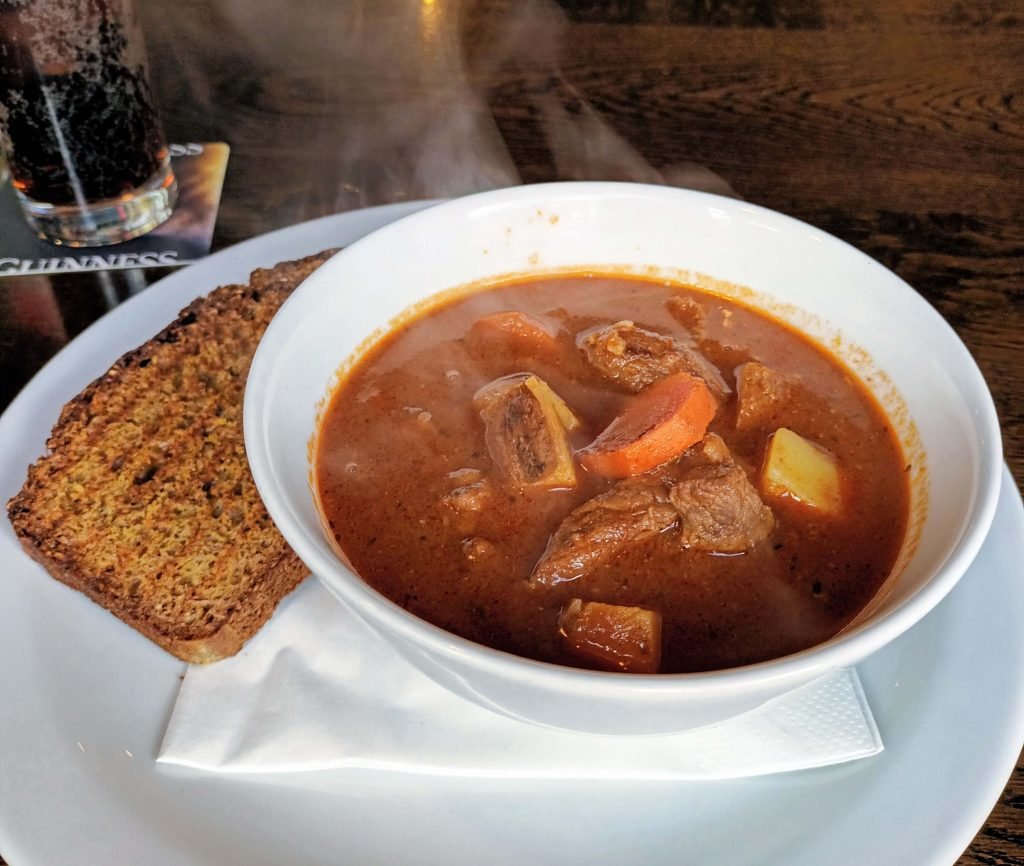
2. Irish Soda Bread
Every Irish family makes soda bread differently – those with a sweet tooth like to add raisins and cranberries, while others prefer various oats and seeds, or even a cheeky drop of Guinness!
Whatever the style, Irish soda bread is always made with baking soda, buttermilk, flour and salt and consumed with lots of butter.
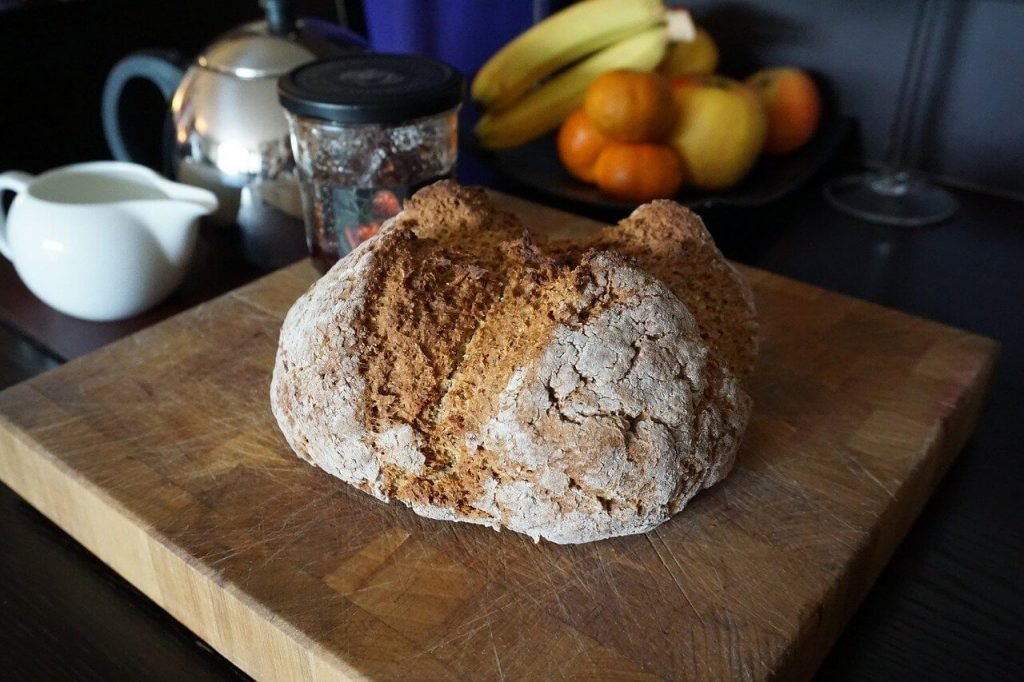
3. Irish Seafood Chowder
If I had a dime for every time my (Irish) boyfriend harped on about seafood chowder, I’d be a very rich woman indeed.
It only made sense that our first dinner together in Ireland would be a seafood chowder!
Irish chowder is made from a mix of fresh and smoked fish (haddock and salmon are popular), shellfish (mussels and clams galore!) and bacon, along with a broth made from cream, white wine and more than a little garlic.
While it’s ‘only’ a soup, Irish seafood chowder is very filling, especially as it’s always served with soda bread, so don’t be fooled when you see it listed as a starter on pub menus!
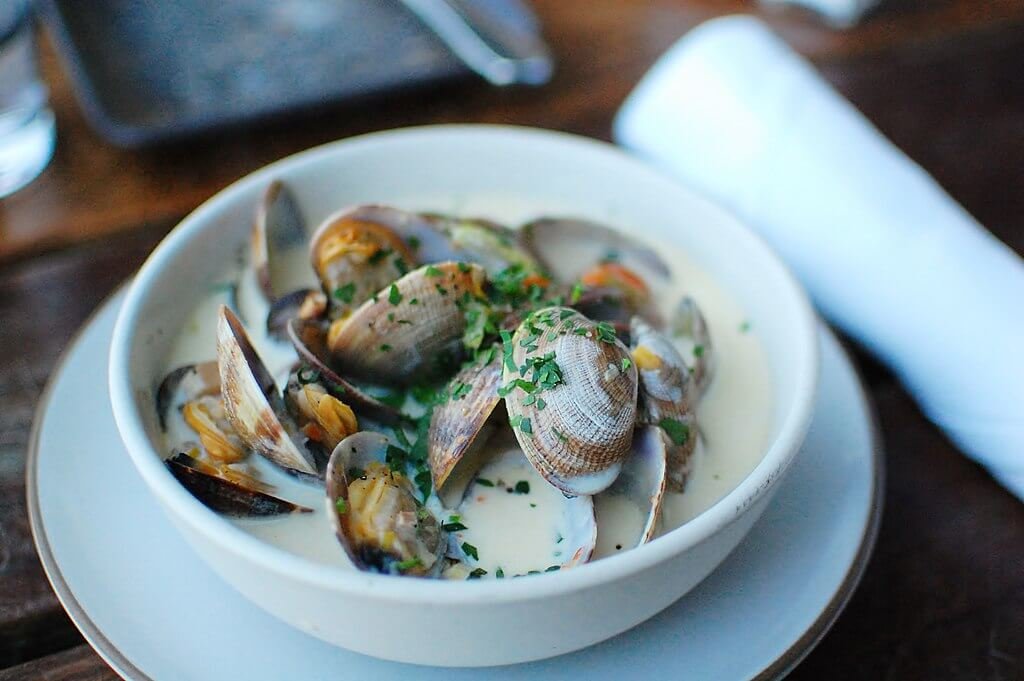
4. Shellfish
Ireland is surrounded by water, and so it makes sense that shellfish are very common ingredients in traditional Irish dishes.
When they’re not part of a seafood chowder or fish pie, they are eaten on their own.
Oysters are especially common, as well as mussels, clams, prawns and cockles.
If shellfish tourism is your thing (yeah, I just made that up) you might want to attend the Galway Oyster Festival or take a picture with the statue of Molly Malone shilling her cockles and mussels in Dublin.

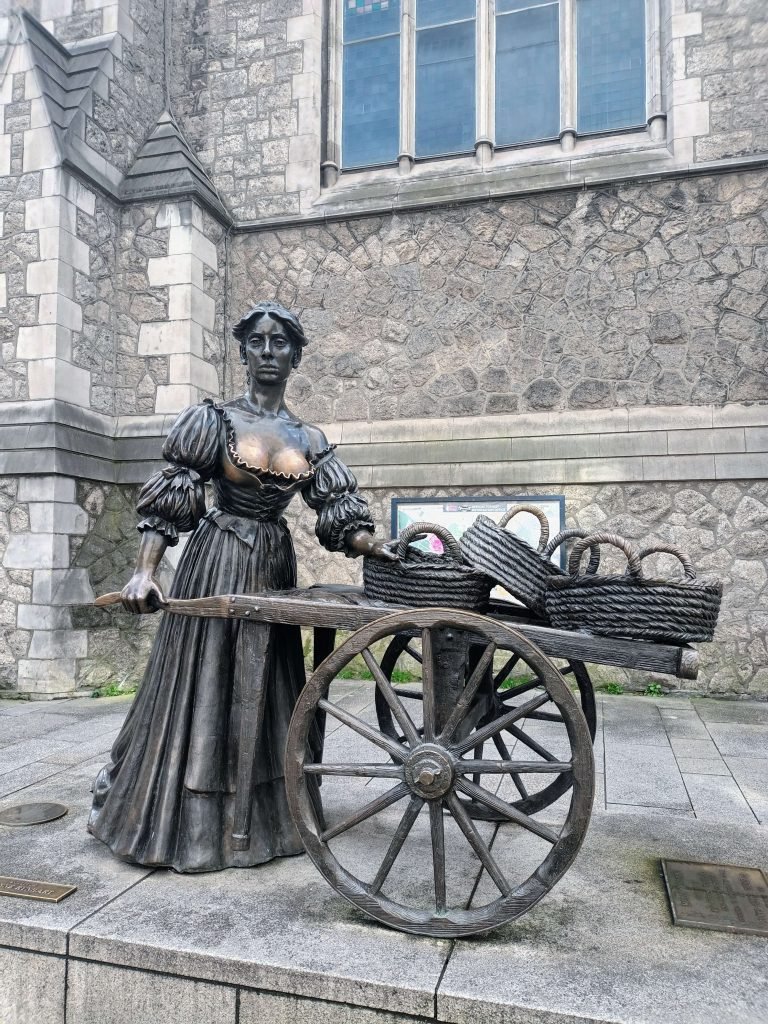
5. Colcannon and Champ
Champ is a simple but classic Irish food made of creamy mashed potatoes and chopped spring onions (scallions), seasoned with salt and pepper and with a big dollop of salted butter on top.
Colcannon is basically champ but with the addition of either cabbage or kale, and sometimes bacon to make it extra special.
These dishes are actually traditionally eaten at Halloween, with parents hiding coins wrapped in paper within the food for the kids to find (kinda like an Irish trick or treat).
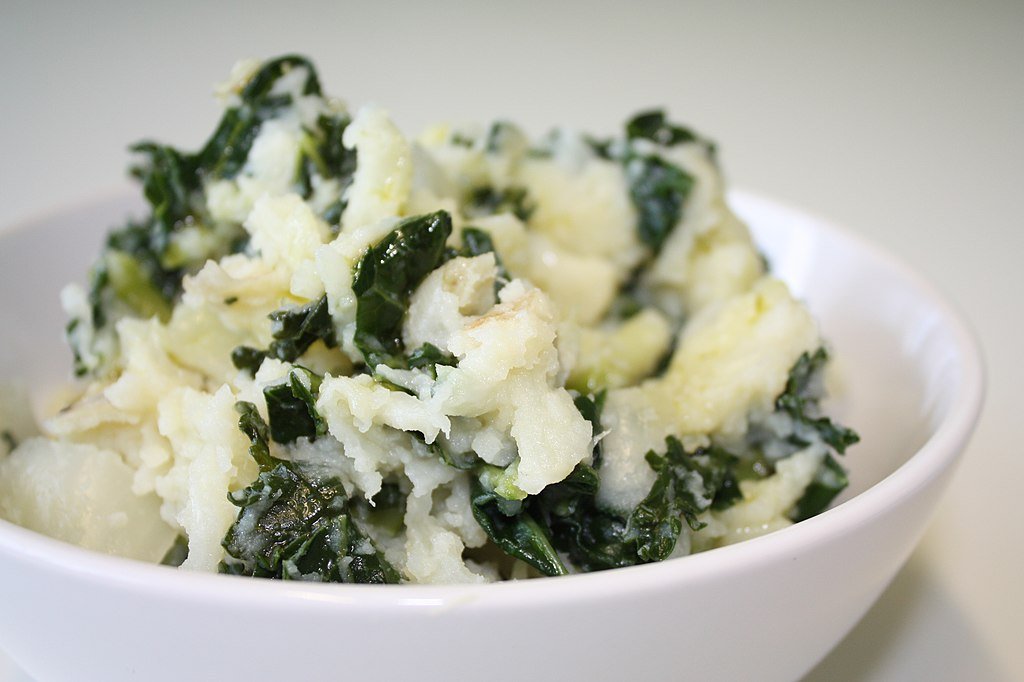
6. Smoked Salmon
Salmon is the most popular type of fish served in Ireland, and smoked salmon can be eaten for every meal.
My favourite way of eating smoked salmon is with toasted granary and scrambled eggs at breakfast time – delish!
7. Black and White Pudding
As someone who comes from Bury, where black pudding came from, it pains me to include it on a list of ‘Irish foods,’ but both black and white pudding are incredibly popular in Ireland.
Black pudding, also known as ‘blood sausage,’ is made with pork meat, fat and blood mixed with barley, suet and oatmeal to make an intensely flavoured sausage, while white pudding is similar but without the blood.
Fun fact: the nicest black pudding I’ve ever tried is the Polish black pudding, kaszanka.
Black and white pudding are typically sliced, fried and served as part of a traditional Irish breakfast.

8. Hot Chicken Roll
Say the words ‘hot chicken roll’ and my boyfriend’s ears will prick up.
For the last two years, he has not stopped talking about the wonders of the Irish hot chicken roll (although he’s very upset that a chicken roll and a drink used to be 3.50 EUR and now a roll alone is over 5 EUR).
When I asked him to describe an Irish chicken roll, he began with ‘The beauty of the chicken roll is its diversity‘ (he gets very passionate about chicken rolls).
Basically, a chicken roll is a chicken fillet (plain, spicy or southern fried) on a fresh baguette with a choice of mayo or butter and two salads (Ethan wants it on the record that he always went for lettuce and cheese, with the addition of coleslaw if he was feeling fancy).
You usually order them with a drink and packet of crisps as a meal deal, and they are especially popular with schoolkids and college students at lunchtime.

9. Full Irish Breakfast
Also called an ‘Irish Fry,’ a Full Irish breakfast is basically the Full English Breakfast but in Ireland.
It contains some or all of the following: bacon rashers, black and white pudding, fried mushrooms, baked beans, hash browns, pork sausages, fried eggs, cooked tomatoes and sometimes some leftover potatoes thrown in as well.
Usually served with tea/coffee, orange juice and toast with butter and marmalade, this is an absolute beast of a meal that is fit for a King, and if you’re visiting Ireland and plan to do a lot of exploring, this is the perfect meal to set you up for the day.
10. Coddle
Sometimes known as the Dublin Coddle due to its roots in working-class Dublin, Coddle is a stew that has been traditionally made to use up the week’s leftovers.
It takes its name from the gentle simmering, or ‘coddling’ in the pot, and typical ingredients include bacon rashers, pork sausage, potatoes, onions, carrots and herbs.
Coddle is an inexpensive winter dish that can be made with pretty much anything you have left in the fridge.
Serve with soda bread to mop up those delicious juices!
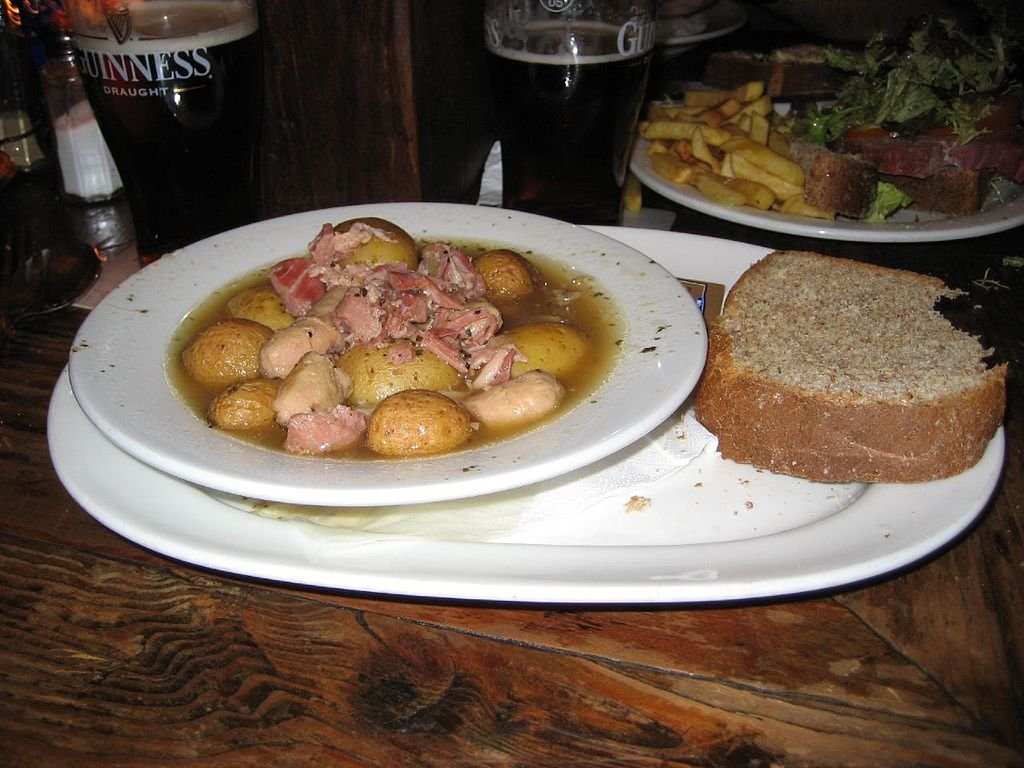
11. Jambons
Jambons were another Irish food that my boyfriend got very excited about when I was asking his advice for this article.
‘Get a jambon with yer chicken roll and it’ll set ye up for the day – great for a hangover!‘ he raved, before demanding that I Google jambons so that I could see what they look like, before ‘setting the scene’ for me:
‘It’s a cold, wet, windy morning. You walk past a Spar and get a waft from the deli counter. There’s only one thing calling your name. A jambon. A melody of hot pastry, cheese and ham.’
I can’t do better then that, ladies and gents.
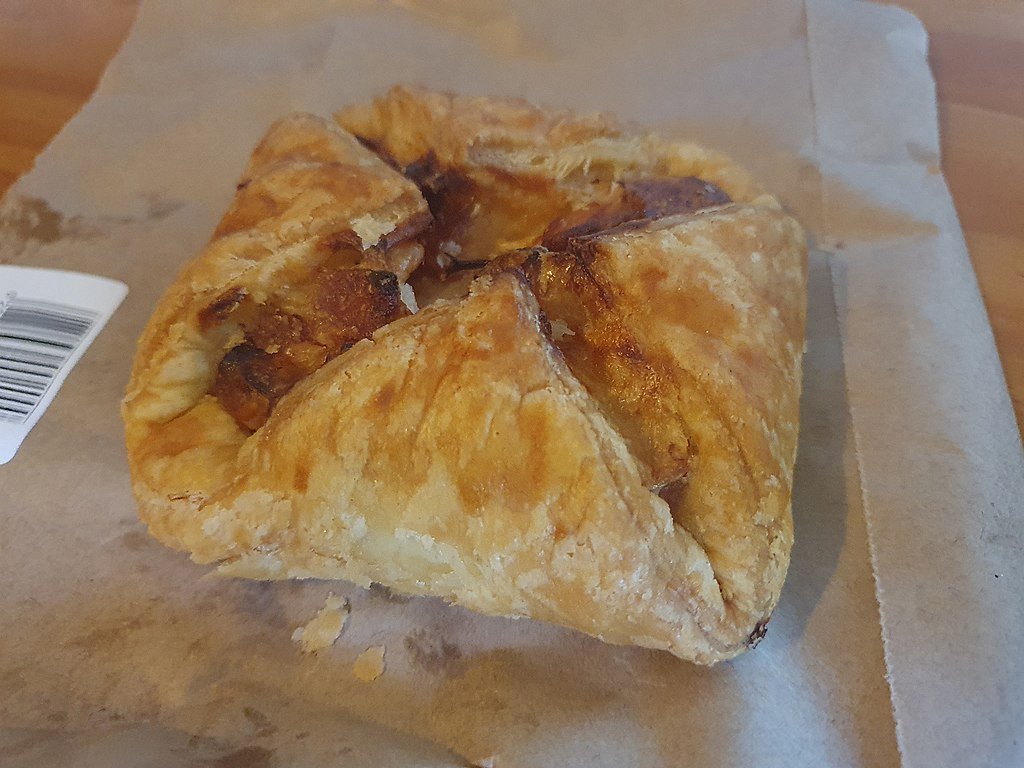
12. Shepherd’s Pie
One of the most quintessentially Irish dishes on the list is Shepherd’s Pie, although my mum always loved to make this when I was younger.
Shepherd’s Pie isn’t actually a pie; rather it’s a mix of ground beef or lamb and vegetables, topped with a thick layer of creamy mashed potato that is then browned to perfection in the oven.
Just like Coddle, it’s a great way to use up leftovers as you can chuck practically anything you want in there.
Onions, carrots, garden peas, parsnips and more all work brilliantly in Shepherd’s Pie.

13. Bangers and Mash
Bangers and mash is traditionally a British dish (common where I’m from in Manchester) that is super popular on pub menus all across Ireland.
The ‘bangers’ in Bangers and Mash are actually sausages, which are served with creamy mashed potatoes, onion gravy and garden peas.
Bangers and Mash is a stodgy and comforting dish that is another winter favourite.
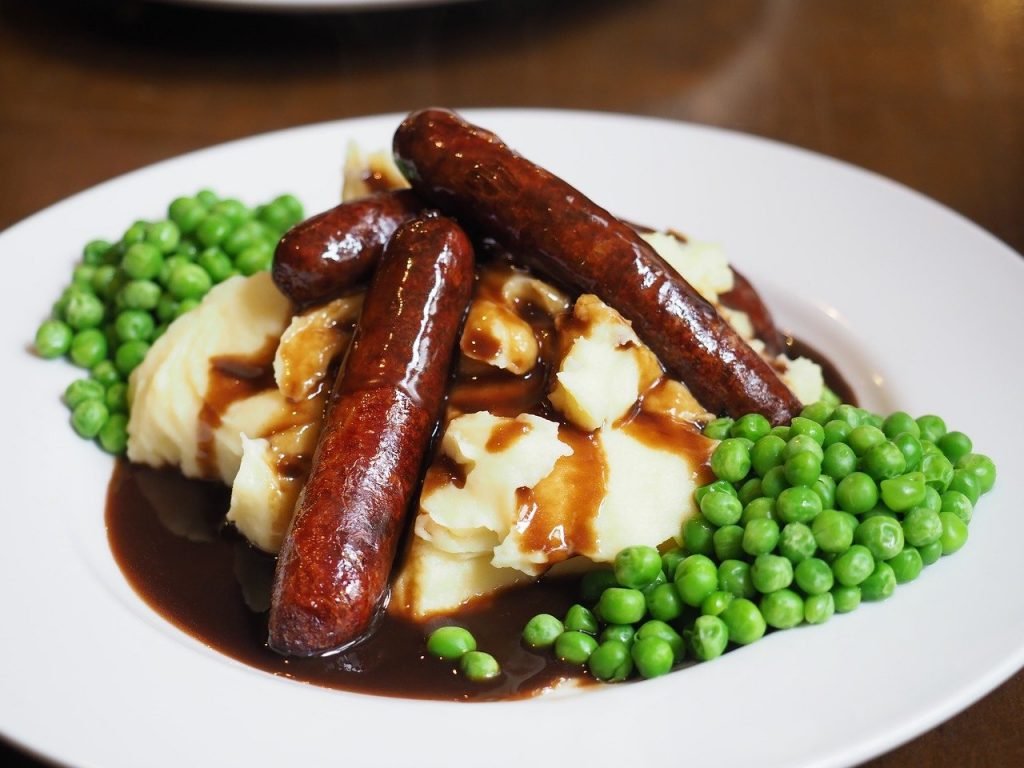
14. Irish Scones
Scones are another childhood favourite of mine, and in fact my nanna’s greatest talent was for creating beautiful buttery scones every weekend.
Irish scones are similar to English scones, but are typically made with less sugar and are slightly smaller.
You can enjoy scones with either salted butter or jam and clotted cream.

15. Barmbrack
Staying on the sweet train for a moment with Barmbrack, an Irish fruit bread made with raisins, sultanas and other dried fruits that is served slathered with butter and alongside a steaming mug of tea.
Although you can enjoy Barmbrack at any time of the year, it is traditionally served at Halloween (just like Colcannon!), along with its own tradition – hidden within the loaf are several ‘surprises,’ and the one that you find is supposed to predict your future.
Find a rag and your future may include poverty or financial struggle, a coin means that your future is prosperous, and a ring means that you may be walking down the aisle sooner than you think!
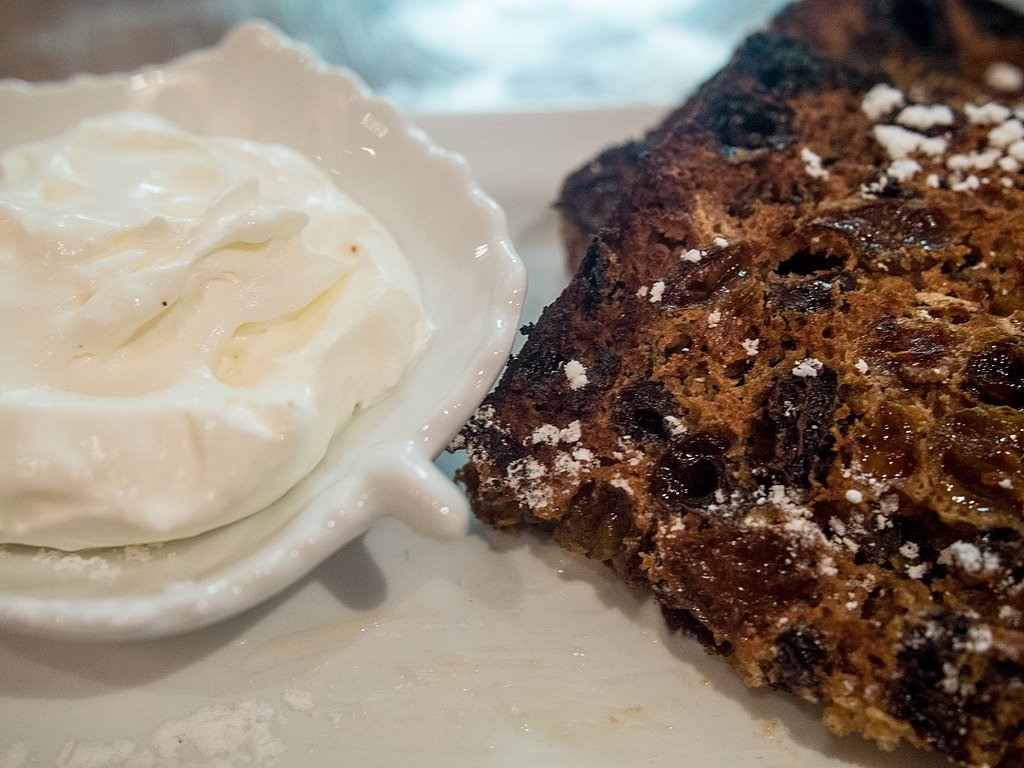
16. Boiled Bacon and Cabbage
It may not sound too appetising, but this is one of the most traditional Irish dishes on the list.
Unlike American bacon, Irish bacon is cut from the shoulder of the pig and is a lot leaner than the stuff you guys across the pond are used to!
This salted shoulder is then boiled with onions, carrots and herbs, before cabbage is added at the last minute.
It is finished with a parsley sauce.
17. Spice Box
Ask any Irish person what the best food at the end of a night out is and they will undoubtedly say that it is a Spice Box (also called a Munchy Box).
The Spice Box is a cultural phenomenon in Ireland and you can get one from pretty much any Chinese takeaway in the country.
Every Spice Box is slightly different, but what you can generally expect is a tonne of chips, chicken wings, spring rolls, pork ribs, chicken balls and chicken tenders, all thrown together with onions, salt and chilli peppers and served with a tub of chip shop curry sauce.
I ordered a Spice Box with Ethan on my last night in Ireland and trust me when I say that it did not disappoint.

18. Guinness
I couldn’t write an article about Irish food and not include the black stuff.
While not technically a food, everybody knows that a pint of Guinness is stodgy enough to replace practically any meal, and let’s face it, you can’t get more Irish than Guinness.
While Guinness is certainly an acquired taste, the malty flavour contains notes of coffee and chocolate, and its thick, creamy texture has won over millions over the years.
Guinness is also usually the cheapest beer you can buy in Ireland, so if you are visiting Dublin on a budget then be sure to order a Guinness when you go to the bar!

Traditional Irish Food | Final Thoughts
Irish dishes are created with two purposes – to fill you up and warm you up.
Most traditional Irish meals are comprised of meat, potatoes and vegetables, and this ‘pub grub’ style food is perfect for those cold Irish winters.
With that said, there are several things on this list that are definitely designed for summer, and so if the sun ever does decide to show its face while you’re in Ireland, be sure to order some oysters on ice, smoked salmon and a cold pint to wash them down with.
I hope you enjoyed this guide to Irish food – I haven’t included every single Irish food out there (my boyfriend has never even heard of boxty, which is apparently a huge thing), but I’ve strived to include the most typical ones, especially those that I have eaten on countless occasions, both during my time in Ireland and growing up in the North of England.
Until next time,
XOXO
If you liked this article and would like to support my work, please click the button above to donate a couple of bucks and buy me a coffee. The ad revenue that I receive on this website is minimal, so support from my readers enables me to keep creating content that you (hopefully!) love to read.
